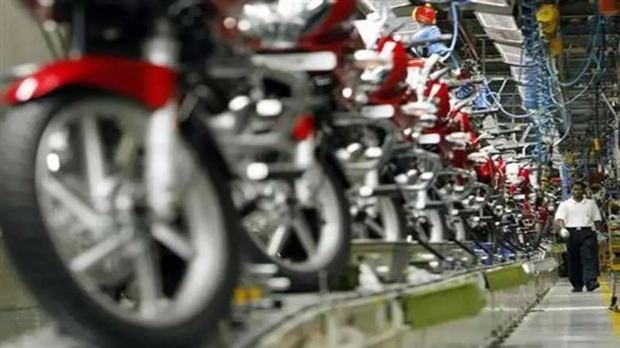By: Rishi Agrawal, Co-Founder & CEO, TeamLease Regtech
Post the pandemic downturn, the automobile industry has experienced a noticeable surge in industry consumption. It is further anticipated to show substantial positive growth over the next few years. While the robust interest rates continue to uphold investment optimism within the automobile sector, certain key challenges remain intact.
One of the challenges faced by the automobile sector is compliance management. Often, automotive companies are subjected to extensive regulatory requirements. They have to comply with multiple laws and regulations, and this varies on the size of their business. The automobile industry is complex, especially in terms of compliance.

Here are some of the compliance challenges faced by the automobile sector:
1. Lack of an accurate list of applicable compliances:
A small automobile manufacturing company operating in a single Indian state deals with at least 489 one-time and ongoing compliance requirements in a year. The number of compliances grows as the company expands its geographical footprint. A significant chunk of compliances come from the Factories Act, 1948 and its associated rules that are enacted by every state. These rules add a number of time-based, event-based, and complete checklists of compliance.
In addition, Automobile companies must comply with industry-specific compliance requirements such as obtaining a licence/certificate of conformity under the Bureau of Indian Standards Act, 2016 and Conformity Assessment regulations of 2018. For every factory, there are specific compliance requirements related to the storage of petroleum under the Petroleum Act, 1934 and Petroleum Rules, 2002. They also need to furnish quarterly filings related to the use of solvents, raffinates, slops and other such chemicals. This is in addition to the licensing requirements for acquiring, storing, and disposing of solvents under the Essential Commodities Act, 1955.
Also Read: Auto Expo to show EV might
All these regulations are divided into three levels; Central, State, and Municipal and categorised into 7 categories, namely, labour, finance & taxation, commercial, secretarial, EHS, industry-specific, and general. This makes it extremely difficult for companies to maintain an accurate list of all the applicable compliances.
2. Poor tracking & managing of licenses and compliances:
A typical automobile company in India deals with tens, if not hundreds, of licenses. These include factory licenses, shop registrations, and establishment registrations. It also requires certification and standardization by ARAI and other automotive authorities in India.

To stay on the right side of the law, automobile companies often deal with the challenge of tracking the applicability of the compliances and their status. These compliances include displaying a notice of danger on every installation of voltage exceeding 250V under the CEA (Measures Relating to Safety and Electric Supply) Regulations, 2010; marking the capacity of storage tanks under the Petroleum Rules, 2004; displaying a “No Smoking” sign at the entrance of a public area as per the Prohibition of Smoking in Public Places Rules, 2008. The manufacturers are also required to comply with the recently notified BS VI phase 2 regulations which provide for stricter emission standards. The new regulations mandate that vehicles have to be fitted with a self-diagnostic device that continuously monitors the emission levels of the vehicle. Furthermore, the new vehicles will also have to come equipped with programmed fuel injectors.
An automobile company also has to deal with several types of safety audits, environmental audits, and fire drills such as segregation and storage of waste generated into 3 separate streams under the Solid Waste Management Rules, 2016. If these ongoing compliances are not adhered to, it can lead to poor compliance, resulting in hefty penalties. Manually tracking and managing the applicable licenses for the automobile industry can be tedious.
3. Fluid Regulatory Environment:
The regulatory environment in India is extremely fluid with over 4,000 regulatory updates published on 2,233 websites belonging to the Union, State, and local governments. These updates bring about changes in the forms, dates, timelines, frequencies, fines, and letters of law among others. A great example of this is the dynamic regulatory environment for the EV sector. Recently the Battery Waste Management Rules, 2022 were introduced which replaced the Batteries (Management and Handling) Rules, 2001 in light of increasing concerns around the quality of batteries used in EVs.
At present, there is no centralized platform for regulatory updates where one can find all national, real-time, comprehensive, and personalized data on all applicable regulatory changes that affect the compliance burden of an automobile company. This leads to the
situation wherein the Compliance Officer has to periodically visit hundreds and thousands of websites to ensure that the company does not miss any critical updates.
4. Lack of Culture of Compliance:
A recent survey conducted by TeamLease Regtech found that in 80% of cases the Key Management Personnel (KMPs) in Automobile Companies had a poor understanding of compliance obligations. A majority of executives were found to have a very poor handle on the status of key compliances, dates, documentation, and residual risk of non-compliance.

From the lower level workers working at the assembly line ensuring that they tick the checkboxes on all compliance requirements during the car assembly process to the designers and engineers in the corporate office designing and building a car in accordance with the Central Motor Vehicles Rules, 1989. The requirements range from ascertaining the dimensions of the car to technical specifications of tyres, brakes, headlamps etc. All of this requires the coordination of every individual involved from design, to the construction of the parts, to the assembly of the vehicle. Without a comprehensive compliance management system in place which instills a culture of compliance at all levels, it can be very difficult for a manufacturer to keep a track of all applicable compliances and their associated regulatory updates.
5. Manual, paper-based & people-dependent compliance:
A typical mid-sized automobile manufacturing company deals with a few thousand compliances in a year. Around 50-100 people from different departments, including Human Resources, Finance & Tax, Company Secretarial, Administration, Environment Health & Safety, Warehouse, Research & Development, are usually involved directly in day-to-day compliance functions.
Also Read: Surge in battery costs may lead to 5-7% hike in EV prices
The automobile industry exported 5.6 million vehicles in FY2021-22. This creates a situation wherein the manufacturers are developing and producing vehicles for both the Indian and international markets in a single place. Vehicles exported to the EU, North and South America, other Asian countries, African countries, and Australia, all need to conform to the local regulatory requirements in terms of emissions, vehicle safety and other technical specifications of the vehicles. Ensuring compliance with different regulatory standards can lead to a situation wherein it can be very easy for the people responsible for ensuring compliance to get muddled between multiple sets of compliance and vehicle requirements in a manual, paper-based & people-dependent compliance approach.
It is essential for automobile companies to take the necessary measures to reduce their compliance complexities. Herein, employing tech-enabled solutions and digitizing compliance management will equip companies with the right tools to ensure that they stay on the right side of the law.
Disclaimer: Views expressed are personal and do not reflect the official position or policy of Financial Express Online. Reproducing this content without permission is prohibited.




















